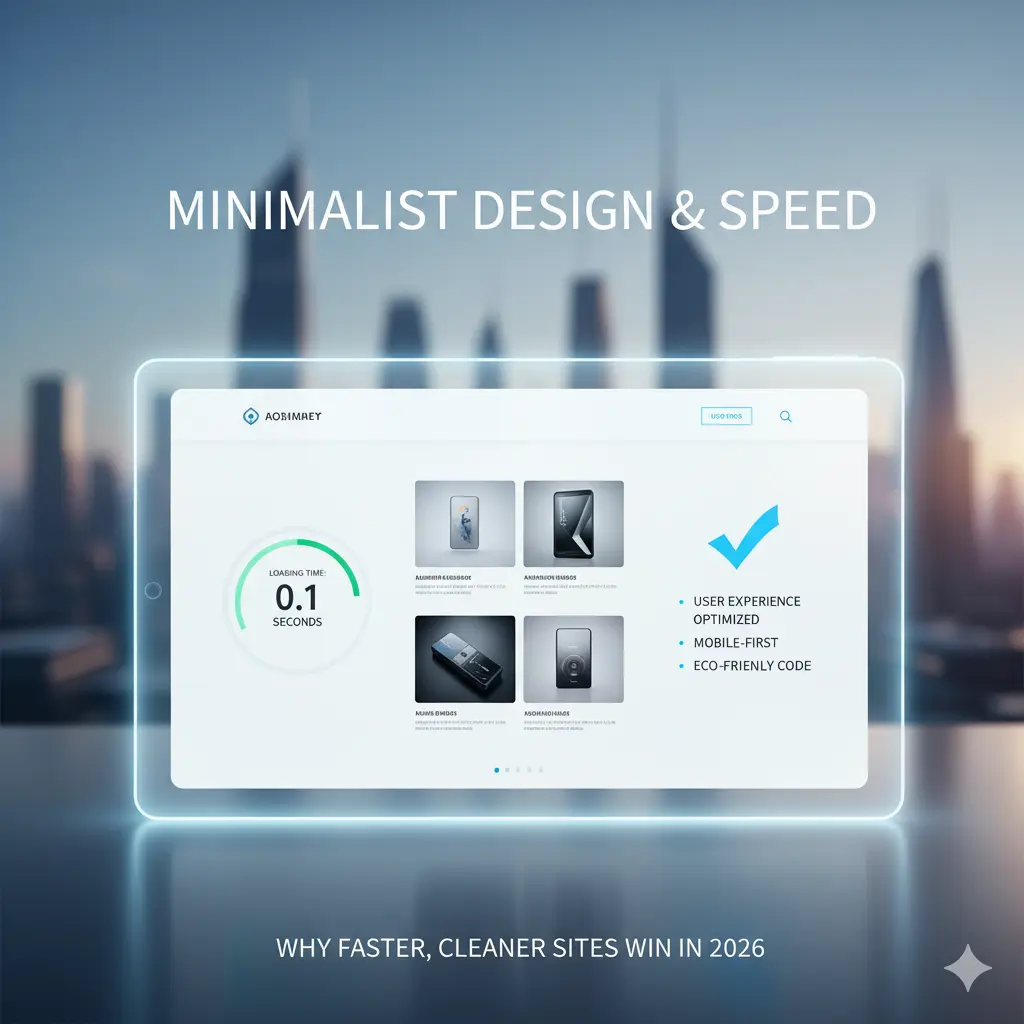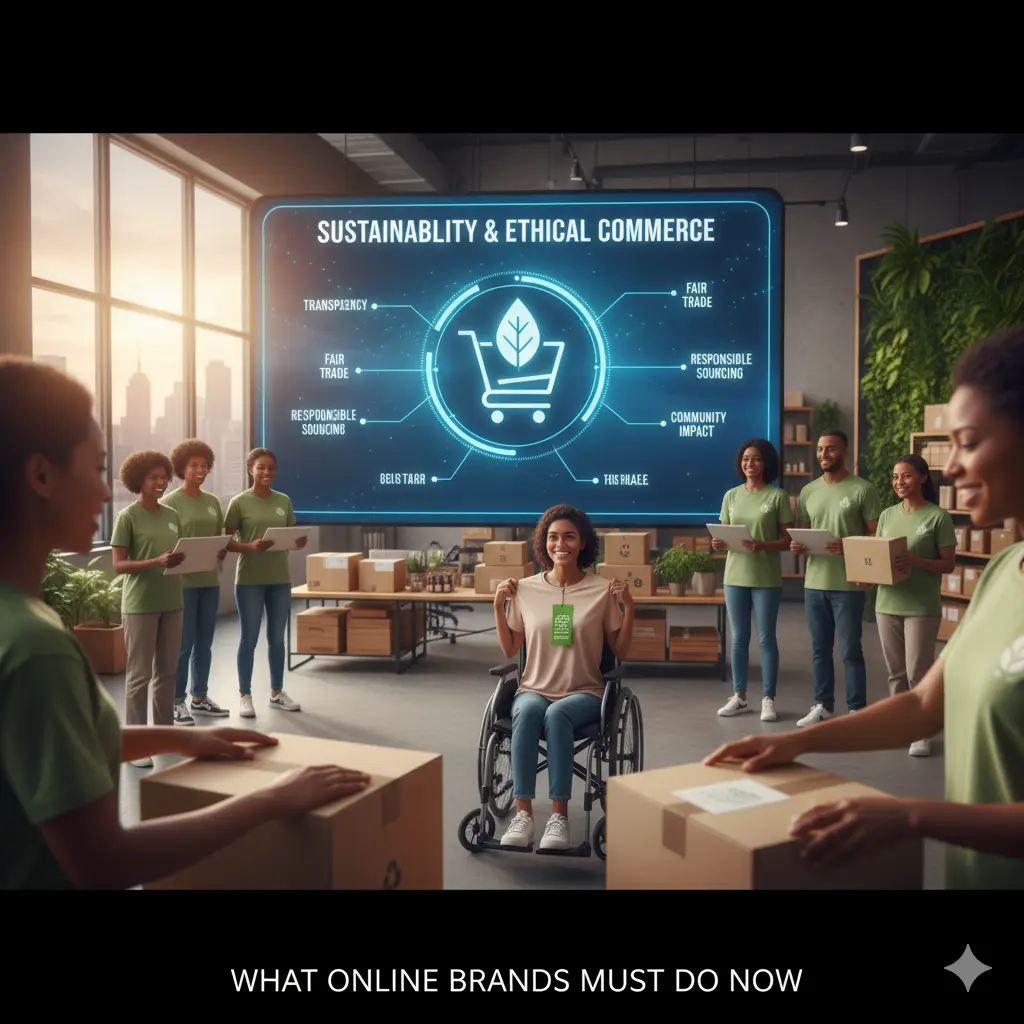As we enter 2026, the web is more crowded, competitive, and cluttered than ever before. Users are overwhelmed with choices, attention spans are shrinking, and search algorithms are evolving faster than design trends. Amid all the noise, one principle continues to define digital success: simplicity wins. Minimalist design—paired with ultra-fast performance—isn’t just a style anymore; it’s a strategic advantage.
Today’s leading brands are embracing minimalism and speed to create seamless, distraction-free experiences that capture attention, build trust, and boost conversions. In 2026, the formula is clear: less clutter + faster load times = higher engagement and better rankings.
The Rise of Minimalist Design in the Digital Era
Minimalist design is built on the idea that “less is more.” It emphasizes clarity, functionality, and visual harmony, removing unnecessary elements to highlight what truly matters. But minimalism is more than white space and simple typography—it’s a design philosophy rooted in purpose, performance, and user experience (UX).
In the past, minimalism was often viewed as a trend. Today, it’s the foundation of modern web design, driven by three major forces:
- User Behavior: People no longer have the patience for cluttered layouts or slow-loading pages.
- AI and Automation: Smart systems demand clean, structured interfaces for effective interaction.
- SEO and Performance: Google’s Core Web Vitals and SGE (Search Generative Experience) now prioritize speed, simplicity, and usability.
Minimalism isn’t about removing design—it’s about removing friction.
Why Speed Matters More Than Ever in 2026
Website speed has always been crucial, but in 2026, it’s a make-or-break factor. According to recent UX studies, even a one-second delay in load time can reduce conversions by up to 20%. On mobile, that number doubles.
The modern web is mobile-first, voice-activated, and AI-integrated. Users expect instant results, whether they’re browsing, buying, or booking. In this high-performance environment, a slow website is a silent killer of brand trust and revenue.
How Speed Impacts Business Outcomes
- SEO Rankings: Google’s algorithms heavily reward fast-loading sites with better visibility.
- User Experience: Quick-loading pages reduce bounce rates and boost engagement.
- Conversion Rates: Fast checkout experiences lead to higher sales and customer retention.
- Brand Perception: Users associate speed with professionalism and reliability.
Speed isn’t just technical—it’s psychological. A site that loads instantly feels more modern, more credible, and more human.
Minimalism Meets Performance: The Perfect Partnership
Minimalism and speed naturally complement each other. A cleaner design uses fewer elements, smaller file sizes, and simplified code—making sites lighter and faster by default.
Here’s how minimalism directly fuels performance:
- Fewer Visual Elements = Faster Load Times: Minimalist pages avoid heavy graphics, animations, and scripts that slow performance.
- Streamlined Navigation: Fewer distractions mean faster user journeys and more conversions.
- Optimized Mobile Experience: Simplicity ensures perfect responsiveness across all screen sizes.
- Better AI Readability: Clean layouts and semantic HTML help AI crawlers and search engines interpret content accurately.
Minimalist design isn’t about artistic restraint—it’s about engineering precision.
The Psychology Behind Minimalist Design
Humans crave clarity. In a digital world filled with noise, minimalism creates mental calm. It guides attention to key actions and information without sensory overload.
Studies show that minimalist interfaces increase user satisfaction and retention rates by over 35%. The visual hierarchy, breathing space, and clean typography enhance comprehension and focus.
In essence, minimalism doesn’t just look better—it feels better. It builds emotional connection through simplicity, mirroring the mindfulness and clarity consumers seek in their lives.
Design Trends Defining Minimalism in 2026
Minimalism has evolved. Today’s minimalist websites blend aesthetic simplicity with technological sophistication. Here are the leading trends shaping 2026:
1. Micro-Interactions and Subtle Motion
Instead of flashy animations, modern sites use micro-interactions—tiny, purposeful movements that guide users intuitively. These animations improve feedback and engagement without compromising speed.
2. Bold Typography and Negative Space
Typography becomes the hero of minimalist design. Clean sans-serif fonts, oversized headings, and balanced whitespace create impact while maintaining simplicity.
3. Neutral Color Palettes with Accent Highlights
Muted tones paired with bold accents (like neon lines or gradient buttons) help maintain visual interest without clutter.
4. Functional Minimalism
Every element must have a purpose—whether it’s guiding navigation, conveying emotion, or driving conversion. Decorative design is replaced by intentional design.
5. Dark Mode and Energy Efficiency
Beyond aesthetics, dark mode supports sustainability by reducing energy consumption on OLED screens, aligning with the eco-conscious web movement.
How to Optimize Your Website for Speed in 2026
Minimalism sets the visual tone, but true performance requires technical precision. Here’s how to ensure your minimalist site delivers maximum speed:
- Use Next-Gen Image Formats: Adopt WebP and AVIF for high-quality, lightweight visuals.
- Enable Lazy Loading: Load images and videos only when they appear in the viewport.
- Minify CSS and JavaScript: Remove unnecessary code to reduce load time.
- Implement a CDN (Content Delivery Network): Distribute content globally for faster access.
- Adopt Server-Side Rendering (SSR): Improve SEO and speed for dynamic content.
- Prioritize Core Web Vitals: Optimize for LCP, FID, and CLS—Google’s key UX metrics.
In 2026, technical performance is design.
The SEO Advantage of Minimalism
Minimalist design doesn’t just enhance aesthetics—it improves search performance. Clean code structures and fast load times make websites more crawlable for search engines.
Moreover, minimalist layouts often deliver clearer information architecture, which helps AI-driven search systems like Google’s SGE understand and summarize your content accurately.
A well-optimized minimalist site ranks higher, loads faster, and earns more featured visibility in generative and visual search results.
The Business Case for Minimalism and Speed
Minimalist, high-speed websites consistently outperform complex, slow ones in engagement and profitability. Data from 2025 shows that:
- Sites loading in under 2 seconds had 40% higher conversion rates.
- Minimalist product pages saw 27% more engagement than heavily designed alternatives.
- Brands adopting minimalist UX reported lower maintenance costs and higher accessibility scores.
Minimalism is not cost-cutting—it’s value-maximizing. It aligns with both business goals and user psychology.
Case Studies: Brands Winning with Minimalism
- Apple: The pioneer of design simplicity continues to dominate by merging minimalism with flawless performance. Every pixel has purpose, every page loads instantly.
- Airbnb: Uses clean layouts, high-impact visuals, and fast-loading UI to simplify decision-making.
- Notion: Combines minimal aesthetics with functional depth, creating an interface that feels intuitive and lightning-fast.
These brands prove that minimalism isn’t about emptiness—it’s about clarity, speed, and purpose.
Future of Web Design: Minimal, Intelligent, Instant
Looking ahead, AI, automation, and voice interfaces will demand even simpler digital ecosystems. Websites will evolve into adaptive, data-driven experiences that load instantly and speak directly to user intent.
Expect:
- AI-assisted UI design that auto-optimizes for load speed and clarity.
- Voice and gesture navigation replacing traditional menus.
- Predictive content delivery powered by generative AI.
- Lightweight frameworks like Astro and Svelte dominating front-end performance.
In short, the future web will be minimal, intelligent, and instant—built for humans, powered by machines.
Final Thoughts
As 2026 unfolds, digital success will belong to brands that simplify, accelerate, and humanize their online experiences. Minimalist design and speed are not opposing forces—they are two sides of the same coin, working together to create clarity, efficiency, and connection.
A fast, clean website reflects more than technical mastery—it reflects respect for your audience’s time and attention. In a world where milliseconds matter, simplicity isn’t just beautiful—it’s profitable.
In 2026 and beyond, the winners won’t be the loudest or flashiest—they’ll be the fastest, clearest, and most intentional.


